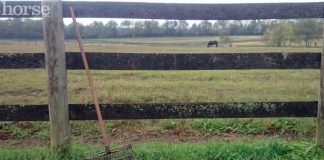
Lots of riders work with a trainer to help get themselves and their horses into top shape. But according to veteran professional trainer Clarissa Cupolo, in addition to providing instruction and timely advice, trainers should be partners with their human and equine clients.
Recognize that riding is a sport
No matter what the discipline, horseback riding involves physical exertion.
“Your muscles are going to work and your muscles are going to hurt,” Cupolo says. “People who have been involved with the sport as kids are going to know this, but someone who is truly a beginner must realize this.”
Know your goals
Some riders engage a trainer to learn the basics. Others work with a trainer in order to become more competitive in the show ring. Either way, Cupolo believes trainers are most effective when clients have a clear understanding of their own immediate and long-range goals.
“Everyone has different goals, and those goals may change over time, but riders should be clear about what they expect from a trainer when they hire one,” Cupolo says.
Shop for a trainer
Likewise, trainers are most effective when they are experienced in a client’s riding discipline, are compatible with their goals and are in tune with a student’s personality and learning style, Cupolo says.
“Talk to other people who have taken lessons from that trainer to find out if it’s a good match,” Cupolo advises. “Also, if you can, ride a horse that has been trained by that trainer.”
Listen
Trainers want their clients to make the most of their time together. That means listening to their advice.
“Whether I’m on the ground or riding along with you, I can see things you need to improve, so you should listen to me,” Cupolo says.
Don’t just take instruction, ask questions, too.
No matter what a rider’s goals, knowing how a trainer’s instruction applies to an individual’s riding style is key. So asking questions is a must, Cupolo says.
“Also, don’t be afraid to ask me to show you any instruction or technique that you don’t understand,” Cupolo recommends.
Practice for yourself
Trainers expect their clients to practice things they’ve learned, but practices should reflect individual progress, no matter how small.
“Practice makes you better,” Cupolo says. “But you have to practice for yourself – not for me or anyone else – but just to meet your individual goals.”
Push yourself
Even the most effective trainers cannot replace the rider’s own hard work in the saddle.
“You need a trainer who knows about your discipline and your individual goals, but you have to do the work,” Cupolo says. “You make progress when you push yourself a little harder every time you ride.”
Leave the judgment at home
A trainer’s jobs becomes difficult when riders judge their own performances too harshly, Cupolo says. She recommends that riders enjoy the learning process.
“Progress takes time, and its important to recognize even the small improvements whenever they happen,”Cupolo advises.
Ride for yourself
Whether someone takes up an equestrian sport for fitness or for any other reason, trainers are most effective when clients strive for their own personal best.
“Ride for yourself and for your own reasons,” Cupolo recommends.
More costly equipment won’t make you a better rider.
Finally, Cupolo advises that spending money on equipment alone will never make riders better.
“Some people come to this sport thinking that if they find the perfect saddle they’ll be a better rider,” Cupolo says. But the truth is that spending money on equipment is not the answer; it takes time in the seat and it takes practice to be better.”
Liked this article? Here are others you’ll love.
10 Things Your Barn Worker Wants You to Know
10 Ways to Be a Better Boarder






cool
Hey, they forgot the most important lesson…enjoy your horse and your ride. Take time to spend on the ground time with your horse too.
Good tips.
good advice